Season's Change
Published August 2024
By Ben Luschen | 16 min read
The nation’s biggest stage isn’t on Broadway or anywhere in the borough of Manhattan. The extravagant glitz of the Las Vegas Sphere or the billion-dollar football palace in Arlington, Texas, don’t come close, either. America’s largest and most hallowed coliseums tower over college towns like Ann Arbor, Michigan; State College, Pennsylvania; and College Station, Texas. Games between students with homework and textbooks are elevated into grand sporting spectacles watched by millions coast to coast. Filling these bleachers are denizens of one of the most passionate fandoms there is: college football. They come clad in school colors, as young as infants, brought by their parents, who were brought to their first games by their parents before them. But the 2024 season is not your dad’s college football. In fact, no one has ever seen anything like this.
Change is the name of the game this fall. For the first time at this level, a month-long, twelve-team playoff will determine the national champion. The Universities of Oklahoma and Texas are joining the Southeastern Conference and leaving the Big 12 behind. Utah, Arizona, Arizona State, and Colorado will try to fill their shoes in the league after departing from the Western-U.S.-based Pac-12 Conference, which is left all but dead in conjunction with the previously announced departures of Southern California, UCLA, Oregon, and Washington to the primarily Midwestern Big Ten. That leaves the so-called Ivies of the West Coast, Cal-Berkeley and Stanford, to join, naturally, the Atlantic Coast Conference. All of this is without mentioning the reintroduction of an officially licensed college football video game, the shuffling of league broadcast partners, and the free-market anarchy of transfers and player endorsement deals that have already been shaping the game for the past couple of seasons.
Got all that? It’s okay if you don’t; we’re all learning on the fly. As the football version of the Bedlam rivalry enters its cold war stage, Sooner and Cowboy fans both have a lot of adjusting to do in the near future. Victories, heartbreak, and who knows what else wait on the path ahead, but before we embark down that road, can we take a moment to reflect on where we’ve been? Because before all the money, we had each other.

With fireworks, military flyovers, and music, the pregame festivities at Gaylord Family Memorial Stadium are almost as exciting as actual games. Photo courtesy Stacey West/University of Oklahoma
The Big 12 Conference—a worthy evolution of its predecessor, the Big 8—as we knew it is no more. The league will begin play this season with as many teams that weren’t members before 2023 as those that were. But from 1928—when the universities of Iowa State, Kansas, Kansas State, Missouri, Oklahoma, and Nebraska formed the original Big 6 Conference (Colorado joined in 1948 and Oklahoma State rounded out the party in 1959)—to this past year, this was the conference most associated with the center crease of the U.S. map—America’s Heartland. This remained true when the Big 12 was formed in 1996 with Southwestern Conference expats Texas, Texas A&M, Texas Tech, and Baylor. In 2024, though, the new-look Big 12 spans three time zones from Florida to Utah.
“We’ve thrown geography to the wind,” says Tulsa World sports columnist Berry Tramel, who has covered college football in Oklahoma for decades, “but it used to be a big deal. College football was the most provincial of sports.”
Depending on the year and sport in question, the old Big 8/Big 12 could be found wearing the hat of powerhouse, pedestrian, or punching bag. But regardless of how good the players were, in the stands were people proud of their favorite school and insatiable in the desire to hold something over folks in other parts of the country who might otherwise denigrate the region as flyover country. Football fields, basketball courts, and wrestling rings are great equalizers.
“It’s part of the atmosphere of college football: ‘Our league is better than your league,’” Tramel says.
Oklahoma and Nebraska enjoyed long stretches of football dominance, racking up twelve combined national championships as league associates. Kansas basketball captured four NCAA men’s titles in that time. Oklahoma State has fourteen team wrestling championships since joining the Big 8. The conference also excelled in aspects not involving a scoreboard. Just a year after Jackie Robinson broke Major League Baseball’s color barrier in 1947, Kansas became the first Big 8 school to field an African American football player. By 1960, every team in the league was racially integrated. Meanwhile, teams in the Southwestern, Southeastern, and Atlantic Coast conferences didn’t even begin integrating until the 1960s, and the SEC became the last major conference to fully integrate in 1972.
The victories and memories made in the old Big 8 and Big 12 will never go away, but they’re also in the past. More good times are coming in the future for both the Sooners and Cowboys, but that doesn’t mean it’s not worth it to take a moment to reflect on everything that was.
“I do think there is justification for the excitement, no doubt about it,” Tramel says, “but there used to be a common identity for this part of the country.”
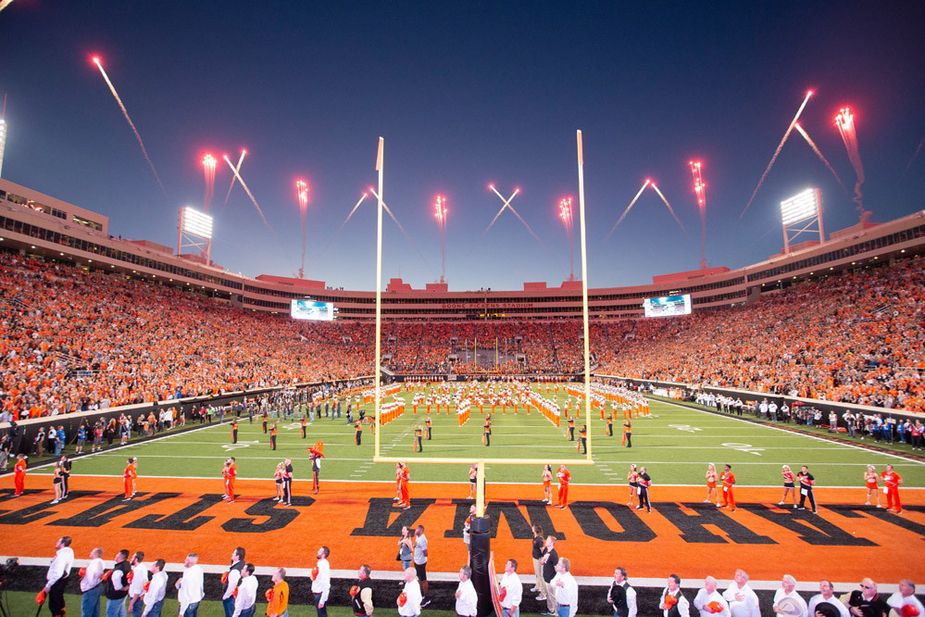
The crowd pauses for the National Anthem at Boone Pickens Stadium in Stillwater. Photo courtesy Bruce Waterfield/OSU Athletics
Maybe it shouldn’t be a surprise that the University of Oklahoma eventually got caught up in conference realignment. It can be argued that they’re the ones who first set off the domino effect of change forty years ago.
Though you might not believe it flipping through the channels on a fall Saturday, there was a time when televising college football games was fiercely restricted. As recently as the early 1980s, National Collegiate Athletic Association rules permitted only one nationally televised game per week. In 1981, Georgia and OU—one of the most successful and in-demand football brands of the time—challenged these restrictions in a case that was appealed all the way to the U.S. Supreme Court in 1984. The Court ruled the NCAA’s rules violated antitrust laws, beginning the transition of conferences like the Big 8 from regional partnerships to third-party television rights negotiators that must continuously compete with other conferences for their own members. By joining the SEC, OU is expected to earn a broadcast revenue share of around $30 million more per season than it had in the Big 12.
Though big network money has been the impetus of great change in college football, it also has brought the game to unprecedented heights of popularity. Toby Rowland has been the Sooners’ radio voice for ten seasons and hosts a morning talk show every weekday on Norman-based station KREF. While support for the conference switch in the fan base might be a tad bit short of unanimous, Rowland says this is far and away the most excited OU fans have been for a season since he started.
.jpg)
The Sooners take the field with a dramatic entrance at every home game. Photo courtesy University of Oklahoma
“You look at the football schedule this year, and you can’t help but get excited about Tennessee, Alabama, and South Carolina coming to town,” Rowland says. “And I think while there is a tremendous amount of love and respect for our cohorts in the Big 12 and back to the Big 8 for so many years, when you see the same teams on your schedule year after year, you get a little dulled to it, whether that is the right way to be or not.”
A new league also brings new road trips. Away games at the universities of Auburn, Mississippi, and Louisiana State promise raucous crowds in classic gameday settings most local fans have yet to experience firsthand. The Sooners will also be reunited with an old conference companion, the Missouri Tigers, for the first time as SEC foes during a November game in Columbia, Missouri. If that sounds like a daunting slate of opponents, that’s because it is. The Sooners are taking a step up in competition. But if OU plays up to its historic standard, it’s a challenge the team should be capable of meeting.
“Greatness in others brings out greatness in yourself,” Rowland says, “and I think you’ll see Oklahoma athletics improve across the board.”
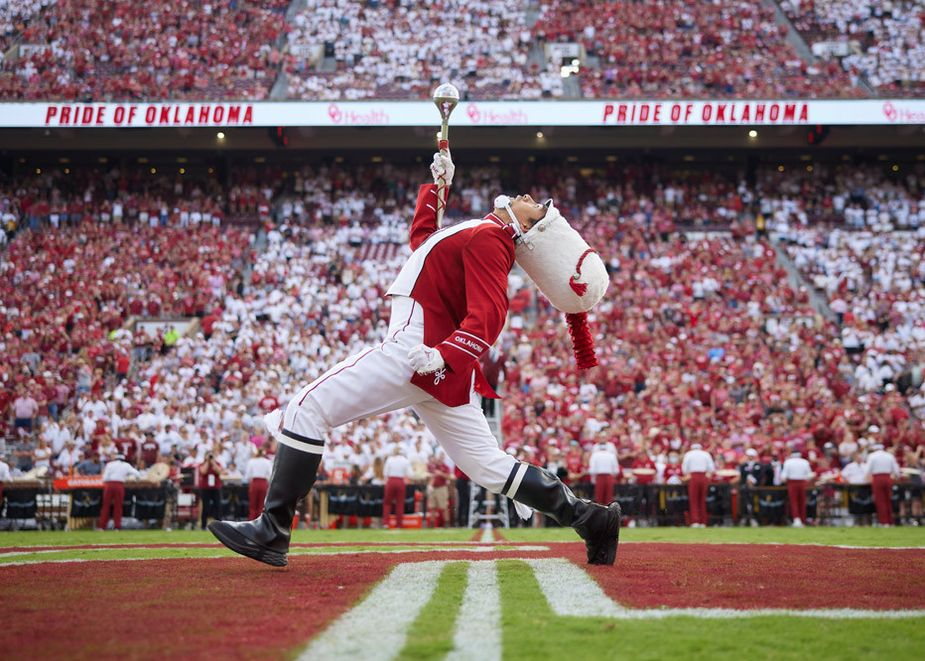
The Pride of Oklahoma Marching Band’s drum major struts across Owen Field during a pregame show. Photo courtesy Travis Caperton/University of Oklahoma
While the move to the SEC puts the Sooners in front of a lot of new opponents, there is one glaring omission from this and future football schedules: The football Bedlam rivalry has been discontinued. Perhaps one day, the Sooners and Cowboys will work the game back into their plans; they might even meet in a bowl or playoff game in the near future. For now, though, no one can say for sure that the series will happen again.
It might be tempting to downplay the loss of this annual meeting, but the Bedlam tradition’s ubiquity in the state can’t be overlooked. How many House Divided car decals and yard signs do Oklahomans see on a weekly basis? How many Bedlam-themed competitions and spirit days at local schools and offices? How many tense Thanksgiving dinners shared between red and orange?
Dave Hunziker, radio voice of the Oklahoma State Cowboys, says the loss of the game still is hard to fathom.
“How do you develop fans and interest in college football for the long-term if it’s not intertwined with the fabric of your daily existence?” Hunziker asks. “In Oklahoma, as far as college football goes, Bedlam is at the top of that. The rivalry kept college football present in our minds eleven and a half months out of the year.”
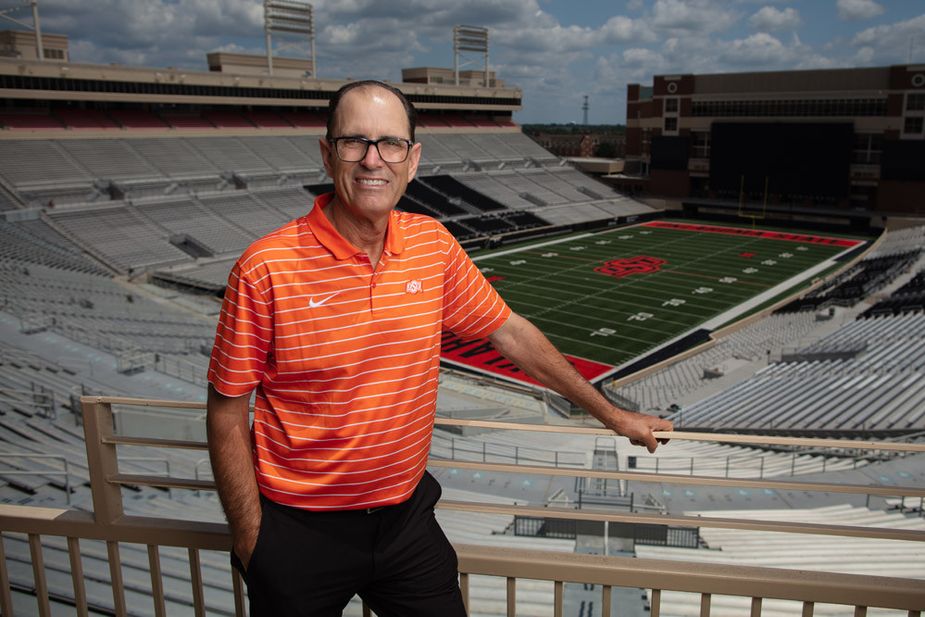
Dave Hunziker has been the “Voice of the Cowboys” for Oklahoma State University football and men’s basketball since 2001. Photo by Brent Fuchs
The distance from OU and Texas could also be fortuitous for the Cowboys. In terms of recent success, Oklahoma State’s football program is on par with any in the Big 12, which should put the program among the annual favorites to win a conference title. The expanded playoff format offers OSU a path to earning a national title on the field, something that was not granted to their great teams of recent memory. There is reason for optimism in the new-look conference, but the league changes are a matter of necessity, not preference. These colleagues from across the map need each other.
“The good news is that Oklahoma State fans come to watch us play,” Hunziker says. “They come to support Oklahoma State, and as far as attending games, I don’t think it’ll matter here. There’ll be places that it does matter.”

Cowboys mascot Pistol Pete moseys along the streets of downtown Stillwater on game days. Photo courtesy Bruce Waterfield/OSU Athletics
They might not be on the same page for everything college football, but Tramel, Rowland, and Hunziker all agree that ending the season with a twelve-team playoff is a welcome development in a game that has historically been ruled by subjective polls. And to bring the coolness factor up an extra notch, first-round playoff games will be played on campus sites.
“Norman or Stillwater could host a college football playoff game,” Tramel says of the possibilities. “OU fans could be going to Penn State for a playoff game. OSU fans could be going to Baton Rouge for a playoff game. That’s pretty dang neat.”
The playoff bracket is indicative of the sense of justice sport gives to fans. Because at the end of the day—no matter the size of the school’s enrollment or endowment, the number of zeroes in the TV checks, or the distance traveled in a season—a team has to prove its worth on the scoreboard. And as long as there’s a chance, there is always hope.
OKLAHOMA SOONERS 2024 HOME SCHEDULE
All games played at Gaylord Family Oklahoma Memorial Stadium
1185 Asp Avenue in Norman
soonersports.com
August 30 Temple
September 7 Houston
September 14 Tulane
September 21 Tennessee
October 19 South Carolina
November 2 Maine
November 23 Alabama
OKLAHOMA STATE COWBOYS 2024 HOME SCHEDULE
All games played at Boone Pickens Stadium
700 West Hall of Fame Avenue in Stillwater
okstate.com
August 31 South Dakota State
September 7 Arkansas
September 21 Utah
October 5 West Virginia
November 2 Arizona State
November 23 Texas Tech

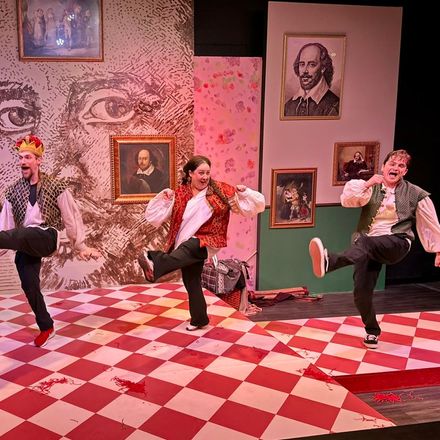
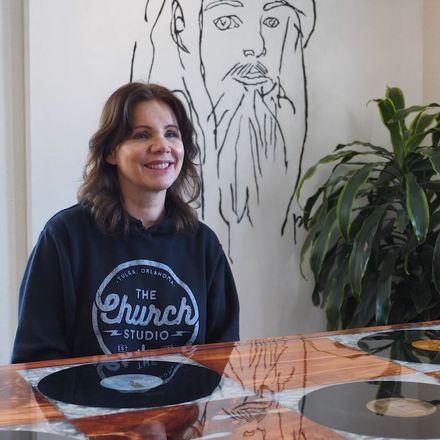
.png)



